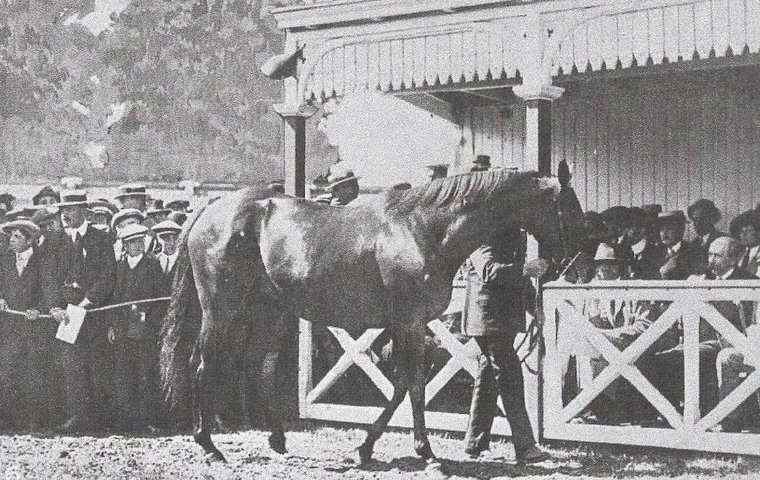
Ahead of the new Sceptre Session at Tattersalls in Newmarket on November 28-29, leading racing historian Michael Tanner – author of a new biography of the legendary mare – recalls the drama of the four-time Classic winner’s visits to the famous sales ring
Five G1 winners including the likes of Alcohol Free, Saffron Beach and Winter Power feature among an outstanding group of fillies and mares set to come under the hammer at Tattersalls’ new two-day Sceptre sessions, part of the forthcoming December Mares Sale (Nov 28 - Dec 1).
GB: It is fitting that one of the star lots in Tattersalls Sceptre Session has the great mare in her pedigree. Sceptre may be 13 generations back in her bottom half and have minimal input to her prowess but without the single outright Quadruple Crown winner in the history of the English Classics there would be no Saffron Beach.
Sceptre herself was no stranger to Park Paddocks, passing through Tattersalls on four occasions. Each visit created immense excitement. But there’s no question which of them was the most sensational.
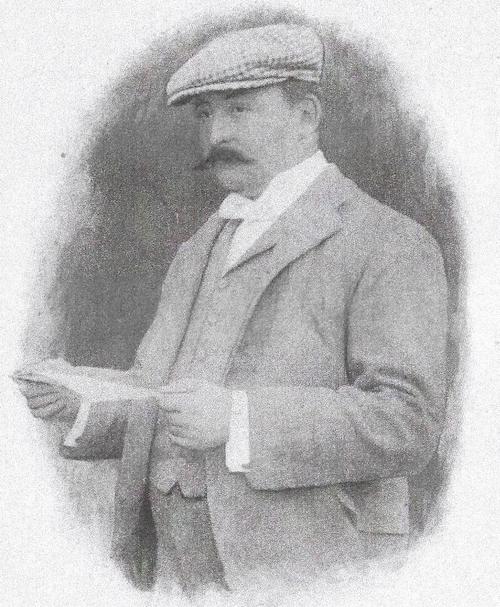 That was July 4, 1900, when she was offered for sale as a yearling on the death of her breeder, the 1st Duke of Westminster, along with the rest of his Eaton Stud. From the first crop of Derby and Leger winner Persimmon out of a sister to Triple Crown winner Ormonde, she was bound to attract attention.
That was July 4, 1900, when she was offered for sale as a yearling on the death of her breeder, the 1st Duke of Westminster, along with the rest of his Eaton Stud. From the first crop of Derby and Leger winner Persimmon out of a sister to Triple Crown winner Ormonde, she was bound to attract attention.
And she did to the tune of a new yearling record of 10,000 guineas that would stand for 19 years. Yet the real sensation surrounded the identity of her purchaser: Robert Standish Sievier.
Dependent on one’s station in life, Sievier was either a scourge of the Establishment or a tribune of the people. One thing beyond dispute was his insatiable need to gamble. The first half of 1900 saw him on a roll. By July his bank account stood £100,000 to the good; and he had the urge to invest in bloodstock.
Chance of a lifetime
“This was a wonderful opportunity,” Sievier said to his trainer Charles Morton on seeing the catalogue of Eaton yearlings. “Nobody has ever had a chance of getting animals like them.”
Writing in his autobiography, Sievier added: “The chance of a lifetime presented itself to a man devoted to the horse and the sport.”
Accordingly, on the Monday before the sale, Sievier withdrew 20 crisp £1,000 notes and headed for Newmarket where he sought out Somerville – ‘Sommy’ to his chums – Tattersall, who’d be conducting the auction, in his room at the Rutland Arms. Their conversation has passed into racing folklore.
“You don’t know much about me,” began the bold Bob, “but cash is the best business reference. I’m going to bid at these sales and here is £20,000 in notes for you to hold as security.”
The auctioneer protested it was after banking hours and he’d nowhere to put the notes; furthermore, it was quite unnecessary and far too great a sum. “Put ’em where you like, your receipt is sufficient for me,” added Sievier.
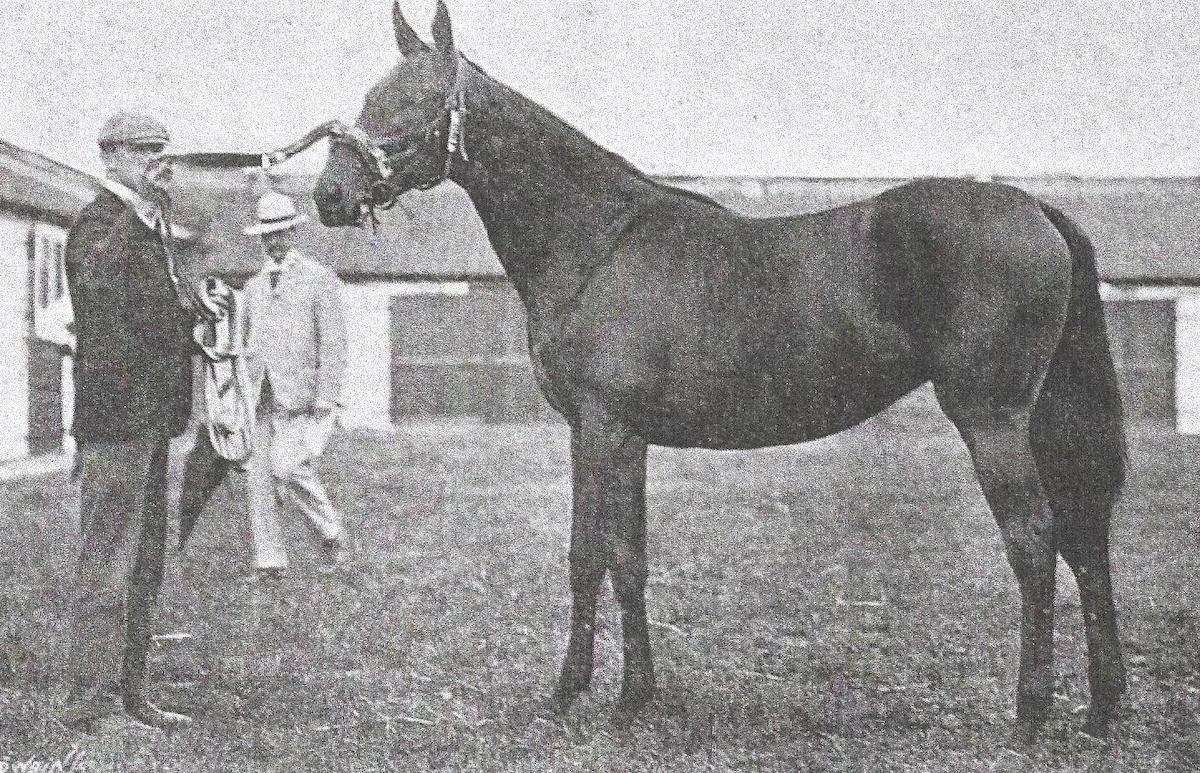 “When the Sale is over I shall have to hand you back several of these notes,” replied Sommy.
“When the Sale is over I shall have to hand you back several of these notes,” replied Sommy.
“I’ll bet you a bob (10p today) you will not!”
“Very well, but I did not know you bet in bobs,” quipped Tattersall. “But where should I put it?” Sievier suggested an anatomical hiding place, bowed and left the room.
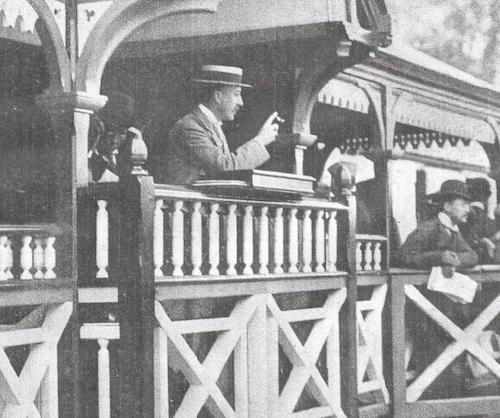 Restless night
Restless night
After ordering his clerk to make a list of their numbers, Tattersall secreted the notes in an envelope on top of his wardrobe for what turned out to be a restless night. Tuesday morning found him waiting outside Barclays Bank for the doors to open.
At an early hour an aristocratic company began to gather at Park Paddocks. “It was easy to perceive that something beyond the ordinary was in prospect,” reported The Sportsman.
But the only figures commanding attention round the ring were the representatives of the new Duke of Westminster (absent with his regiment in South Africa): his trainer John Porter and his land agent, Hon Cecil Parker, who would do the bidding – and Sievier, whose intentions were no secret, sitting quietly directly beneath the rostrum.
Lot 261, the filly that was to become Sceptre, strode into the ring to a buzz of admiration. She was a magnificent specimen, the spitting image of her sire, right down to his ‘mousy’ muzzle. “The value of money was lost in admiration,” cooed Sievier. “I fell in love with her.”
“Will anyone put her in at 3,000 guineas?” ventured Tattersall. “5,000!” boomed Sievier.
Parker responded with an advance of 100. Sievier was in no mood to hang about: “6,000!”
The difference in mindset was evident as Parker went up by another 100 while Sievier countered with four figures: “7,000!”
Both filly and colt yearling records had now gone. A further 100 from Parker. The exchange was repeated at 8,000 and then 9,000.
Sievier went in for the kill. “10,000 guineas!” he roared.
‘I had determined Sceptre would be mine’
A hum of incredulity swept the arena: five figures for a yearling filly by an unproven stallion! All eyes focused on Parker. He shook his head.
“I was dubbed by some an ass, by the majority as mad, while a few kindly referred to the proverb of a fool and his money,” said Sievier. “I should have gone much higher, for I had determined that Sceptre should be mine.”
The purchase took barely a minute or two; the old record smashed by more than 4,000 guineas; no one other than Sievier and Parker participated. Altogether Sievier spent 21,800 guineas on four lots.
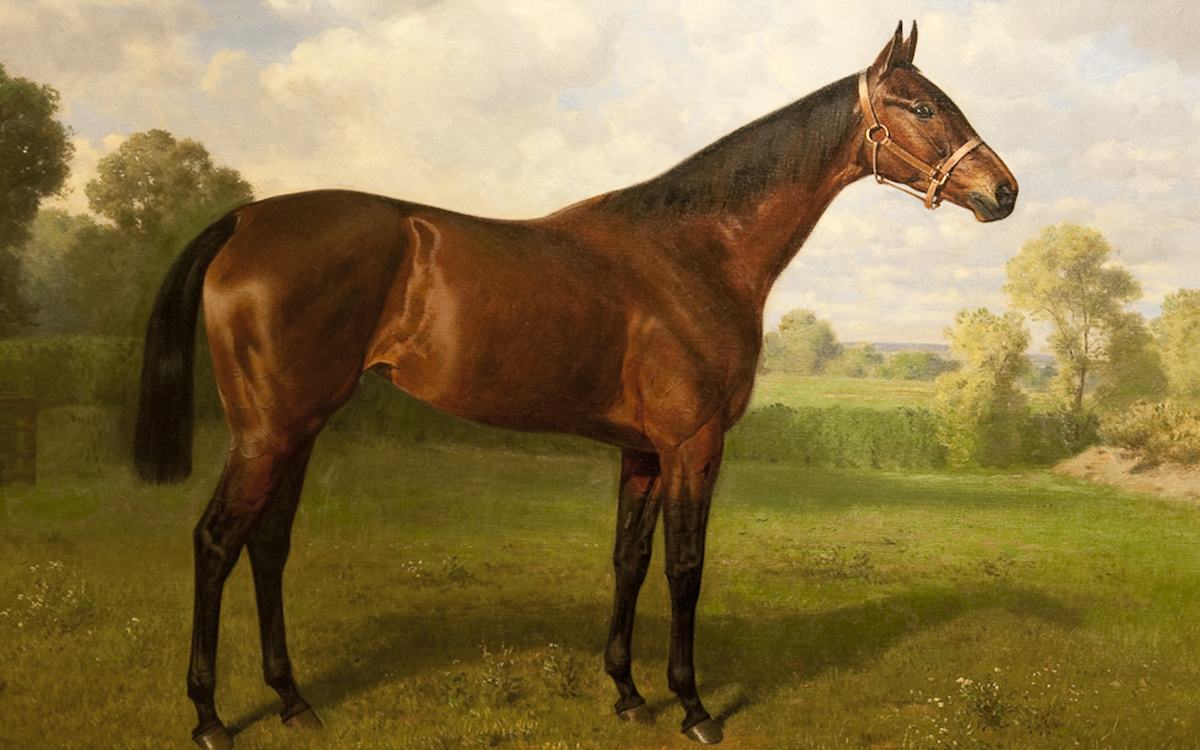 “The most important yearling sale ever held,” said The Sporting Times; “such bidding may never be seen again,” suggested The Sporting Life.
“The most important yearling sale ever held,” said The Sporting Times; “such bidding may never be seen again,” suggested The Sporting Life.
Years later Porter related: “Mr Parker began to perspire with excitement as the price rose. After Mr Sievier had offered 10,000 guineas, Mr Parker refused to proceed further although I urged him to go on. Mr Sievier’s good luck was our misfortune. It was, however, more than good luck that came to the buyer’s aid that day. He displayed a confident judgement and a fearless determination to beat all opposition.”
Five G1s in 15 days
Sceptre’s Classic campaign in 1902 augmented her legendary status. After setting time records in both Guineas following a head defeat in her warm-up – the Lincolnshire Handicap no less – she contested five what are now G1 events in 15 days during high summer, winning the Oaks and St James’s Palace but losing the Derby, Grand Prix de Paris and Coronation Stakes.
By this point Sievier had taken over her training and he was convinced the apple of his eye had to be worked like a navvy to show her best. Two races per meeting became Sceptre’s diet with plenty of gallops in between and even on raceday.
At Goodwood she lost the Sussex but won the Nassau; at Doncaster she won the St Leger but somehow contrived to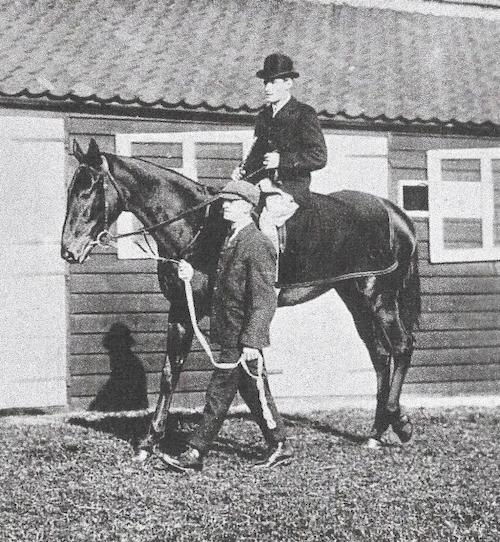 lose the Park Hill. Many stated she’d have won all five Classics had Porter trained her instead of a rank amateur. But had Porter trained Sceptre it’s pretty certain she’d never even have contested all five.
lose the Park Hill. Many stated she’d have won all five Classics had Porter trained her instead of a rank amateur. But had Porter trained Sceptre it’s pretty certain she’d never even have contested all five.
Sievier had waved away every offer for Sceptre – including one from an anonymous buyer who turned out to be Edward VII. But by October he was financially embarrassed enough to send her to Park Paddocks on the 29th with a reserve of 24,000 guineas.
Only a few months earlier he’d turned down £40,000 from American millionaire William Vanderbilt. Although the Duke of Westminster was said to have wanted Sceptre back at Eaton, Porter advised him against meeting her reserve since a broodmare was worth no more than 15,000 in his opinion.
“Again and again the company was invited to proceed to business,” stated Pall Mall Gazette. “They were dumb to a man and to a woman.”
‘They’ve had their chance’
Sceptre was led out amid mayhem. “They’ve had their chance,” muttered Sievier. But his creditors could not be assuaged. His only real asset had to go. A hush-hush deal with Sir Tatton Sykes fell through and the following spring Sceptre was sold privately to Captain (later Sir) William Bass of the 10th Hussars.
Even the green-fingered care of Alec Taylor failed to cure the topsy-turvy nature of her career: glory days in the Jockey Club Stakes, Duke of York and Champion Stakes; heartbreak in Coronation Cup and Gold Cup. Yet public adoration of the ‘Old Lady’ never soured.
Sceptre had thrown four foals (the third being Saffron Beach’s distant ancestress Coronation) before her third visit 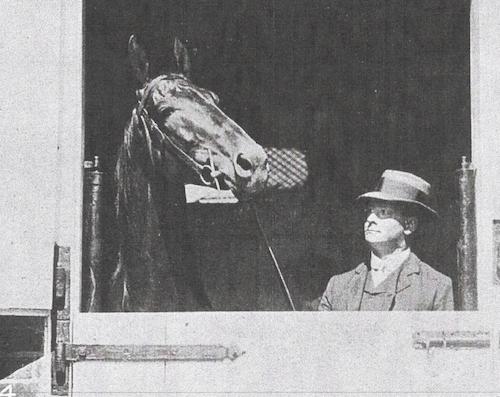 to Park Paddocks on the evening of July 10, 1911. It featured an emotive plea from the rostrum by Tattersall to keep her out of the clutches of foreign buyers.
to Park Paddocks on the evening of July 10, 1911. It featured an emotive plea from the rostrum by Tattersall to keep her out of the clutches of foreign buyers.
In the event, Sommy succeeded by buying Sceptre himself for 7,000 guineas. On hearing the news Sievier attempted to strike a private deal. He was rebuffed.
Sceptre’s final appointment at Park Paddocks came on July 16, 1917. The aged mare, then belonging to John Musker, founder of Home & Colonial Stores, was knocked down to Lord Glanely, with her eighth and final foal at foot (Queen Empress whose descendants number Zucchero, Noor and Taboun), for a derogatory 2,500 guineas.
Sceptre never produced a foal for her last owner before dying at his Exning Stud on February 1, 1926. Despite an extensive search no grave site has been identified. But in the summer of 2022 a plaque was raised near the old yard of the stud to commemorate ‘The Empress of the Turf’.
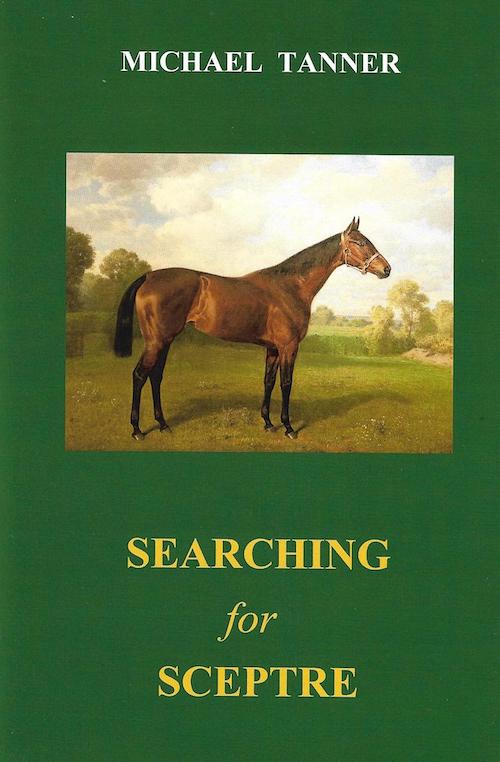 Michael Tanner is the author of Searching for Sceptre, a signed and dated limited edition fully illustrated hardback edition of 120 copies, obtainable from MichaelRTanner@ymail.com for £39.95 (inc P&P)
Michael Tanner is the author of Searching for Sceptre, a signed and dated limited edition fully illustrated hardback edition of 120 copies, obtainable from MichaelRTanner@ymail.com for £39.95 (inc P&P)
• Visit the Tattersalls website
Great racetracks we have lost: Hollywood Park and the dawning of the Breeders’ Cup era
Melbourne Cup: Australian Bloodstock strikes syndicate gold for the second time
Tony Morris: Birdcatcher – the 19th century sire who transformed the reputation of Irish racing
View the latest TRC Global Rankings for horses / jockeys / trainers / sires


